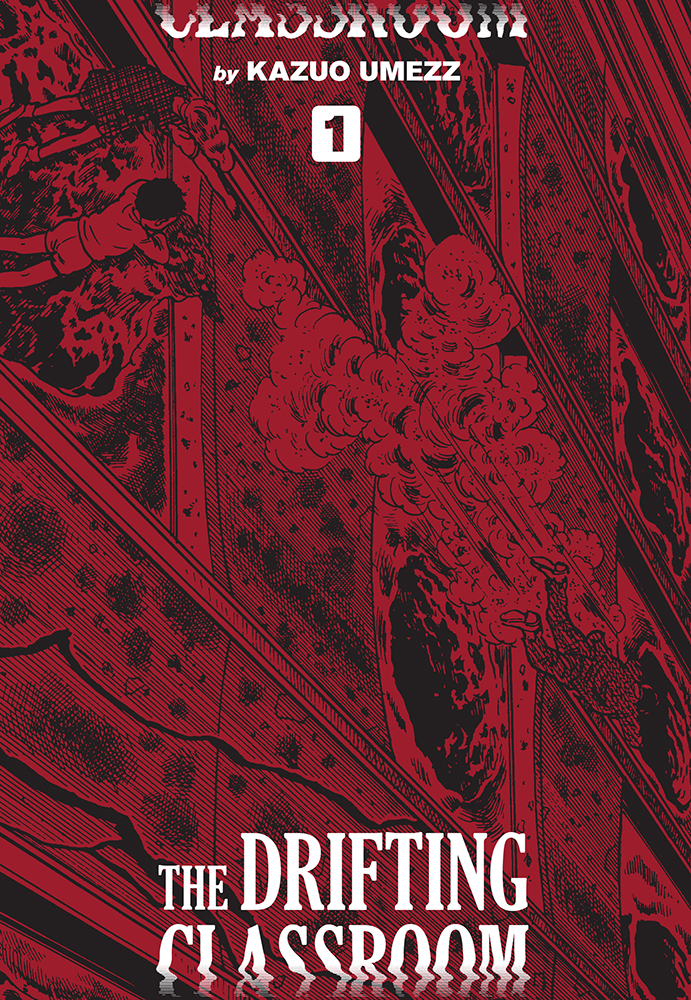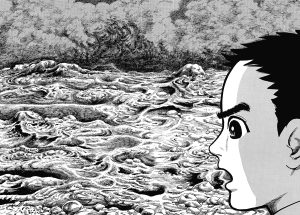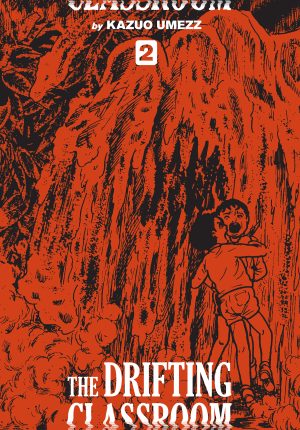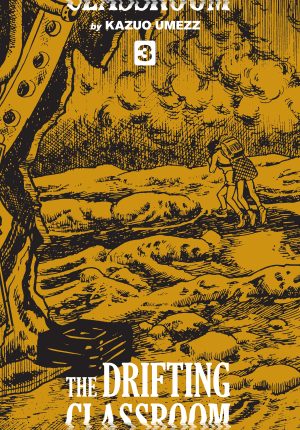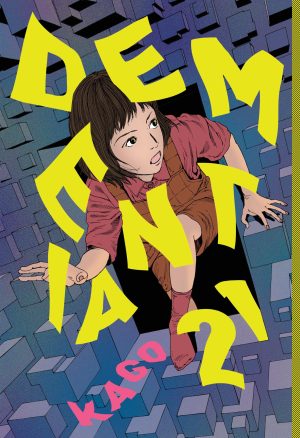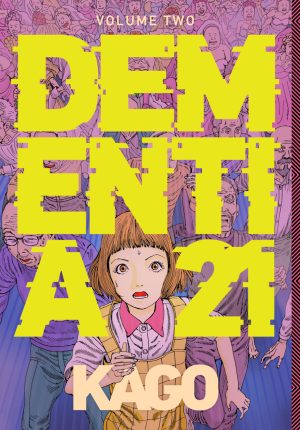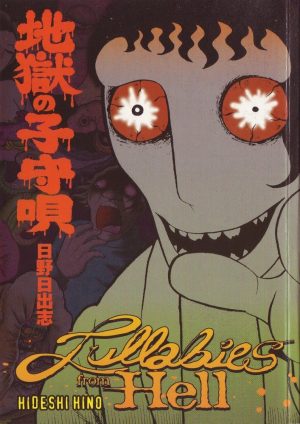Review by Diego Guerra
Little Sho Takamatsu, a sixth-grade student, saves for weeks to buy a futuristic toy his mother considers unnecessary. When Sho reaches the required amount, he changes his mind, and buys his mother a beautiful watch. Later, while crossing the street, the watch falls to the pavement and is crushed by a car.
Sho wanders the streets, encounters a much younger boy on a tricycle, and plays in a park until nightfall. Sho tells the little one that they would play again the next day. Back home, his mother is upset about his delay. Sho doesn’t mention the ruined gift, and the next morning the argument with his mother continues and escalates. Little does Sho know that on arriving at school, he’ll be transported to a distant future, to Earth at a time when humans and their civilization no longer exist. Sho couldn’t imagine that he would meet the tricycle boy again or that his mother had bought him the coveted toy before their fight.
Kazuo Umezz may not be a master of the human figure and perspective like Takumi Nagayasu or Jiro Taniguchi. He lacks the graphic agility and elegance of Naoki Urasawa and the ease of the acclaimed Akira Toriyama or Rumiko Takahashi. What makes Umezz special, besides his eccentricities, is the expressiveness of his characters and his ability to cleanly and precisely merge terrifying stories with melodramatic soap operas and comedies.
In his masterpiece, The Drifting Classroom, the interesting part isn’t that an elementary school travels to the future to a time when the planet’s morphology has changed. It’s not absurd that in this situation, teachers go mad, and children retain their reason, eventually engaging in a brutal war reminiscent of Lord of the Flies. What’s truly incredible is the protagonist, Sho, who carries a devastating sense of guilt over the arguments with his mother before time travelling, can communicate with her through an improbable but immense barrier of time.
The Drifting Classroom is an extensive children’s epic blending horror, melodrama, and science fiction. Umezz draws simply, with agile finishing emphasizing expressions. However, he isn’t necessarily meticulous, abuses kinetic lines, and takes all possible liberties drawing the human body. Crucially, this doesn’t affect the quality as Umezz aims to tell his story efficiently, and he certainly succeeds.
Originally published in the 1970s, the story is politically incorrect to the extreme. Plunged into crisis and pursued by adult teachers who have gone mad, the children reach absurd fanatical extremes, trying to crucify those they believe are guilty of the strange phenomenon they are involved in. Seeking to avoid chaos, they decide to create a government, and one of them, Gamo, the most intelligent, recommends not including any girls in the makeshift cabinet because “women are not capable of thinking on a large scale; they only care about the immediate” (sic). In the apocalyptic atmosphere of this first volume of The Drifting Classroom, with the desolate image of the place where the school was, now just a shapeless wasteland, there is an allegory to the destroyed cities of Hiroshima and Nagasaki (an idea that is developed less poetically and more literally in Barefoot Gen). There are also moments of tenderness confronted with a sad reality: in a world where no living beings remain, man’s only real enemy is man himself.
The Drifting Classroom 2 continues the terror.
